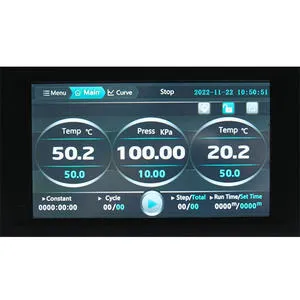In automatic control systems, temperature controllers and PID controllers are common devices used to accurately control temperature. This article will introduce the basic principles of temperature controllers and PID controllers, as well as the differences between them and their respective application scenarios.

Temperature control is a common need in many industrial and laboratory applications. To achieve precise temperature control, temperature controllers and PID controllers are one of the most commonly used tools. They are based on different control methods and algorithms, and each is suitable for different control needs.
A temperature controller is a device used to measure and control temperature. It usually consists of temperature sensors, controllers and actuators. The temperature sensor is used to measure the current temperature and feed it back to the controller. The controller regulates the temperature by controlling actuators, such as heating elements or cooling systems, based on the set temperature and the current feedback signal.
The basic working principle of the temperature controller is to compare the difference between the measured temperature and the set temperature, and control the output of the actuator according to the difference to keep the temperature near the set value. It can use open-loop or closed-loop control. Open-loop control only controls the output of the actuator based on the set value, while closed-loop control adjusts the output through feedback signals to correct temperature deviations.
PID controller
A PID controller is a common feedback controller used to precisely control various process variables, including temperature. PID stands for Proportional, Integral and Derivative, which respectively correspond to the three basic control algorithms of the PID controller.
1. Proportional: This part generates an output signal proportional to the error based on the current error (the difference between the set value and the feedback value). Its function is to respond quickly and reduce steady-state errors.
2. Integral: This part generates an output signal proportional to the accumulated value of the error. Its function is to eliminate static errors and improve the stability of the system.
3. Derivative: This part generates an output signal proportional to the rate of change based on the rate of error change. Its function is to reduce overshoot and oscillation during the transition process and improve the response speed of the system.
The PID controller combines the functions of proportional, integral and differential algorithms. By adjusting the weights between them, the control effect can be optimized according to actual needs.
The difference between temperature controller and PID controller
The main difference between temperature controllers and PID controllers is the control algorithm and response characteristics.
The temperature controller can be open-loop or closed-loop control. It is simple and easy to implement and is usually used in some applications that do not require high temperature accuracy. It is suitable for scenarios that do not require fast response or have a high tolerance for steady-state errors.
PID controller is based on proportional, integral and differential algorithms, which is suitable for both steady-state control and dynamic response. The PID controller can control the temperature more accurately, allowing the system to work stably near the set temperature point while having fast response and steady-state performance.
Application scenarios
Temperature controllers are widely used in many laboratories, warehousing, home heating and some simple industrial processes.
PID controllers are suitable for scenarios that require higher accuracy and faster response, such as chemical industry, food processing, pharmaceuticals and automated production.
In short, both temperature controller and PID controller are devices used to control temperature. Temperature controllers can be simple open-loop or closed-loop control systems, while PID controllers are based on proportional, integral and differential algorithms and can control temperature more accurately, with fast response and steady-state performance. Selecting the appropriate controller depends on the specific application needs, including required temperature accuracy, response speed, and steady-state performance.